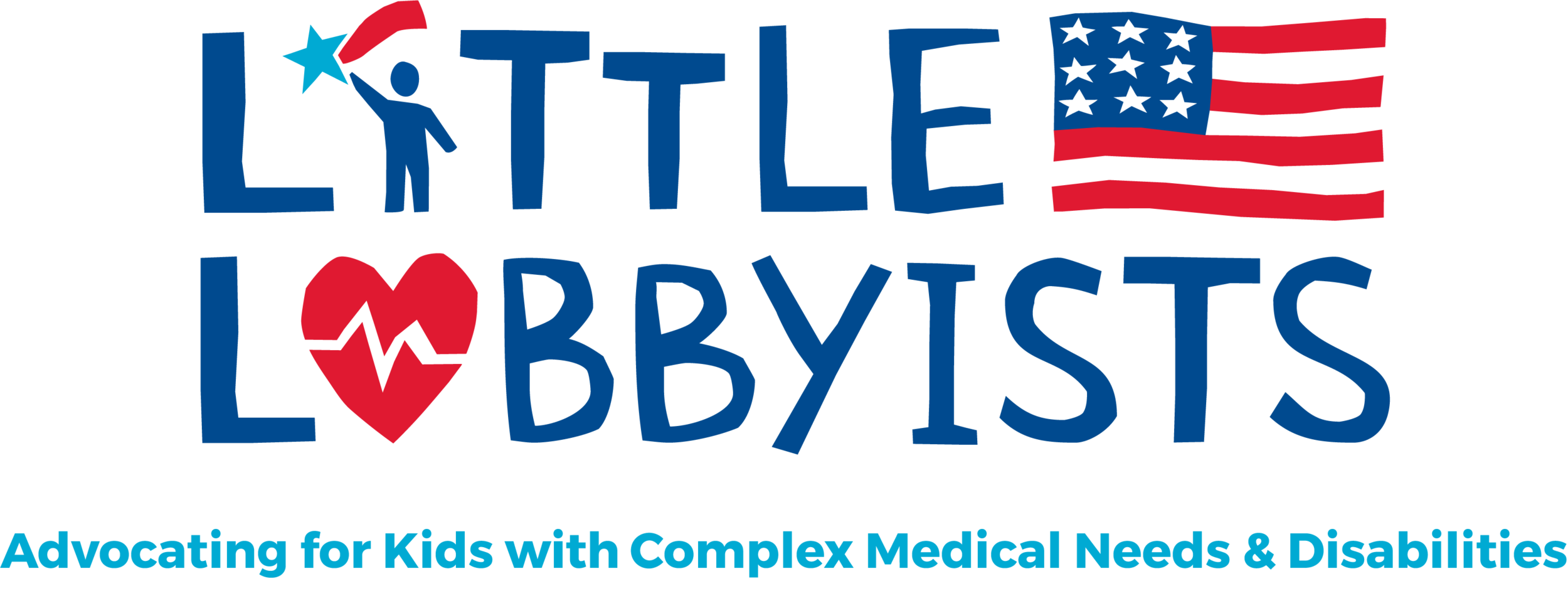Protect Our Kids: Vaccinate Family Caregivers (by Jeneva Stone)
Rob Stone, 23, after his vaccination in mid-February. The process wasn’t easy, but he got lucky. [image description: In a classroom, a young white boy with dark curly hair wears a white face mask over mouth and nose, and a purple surgical mask over his trach tube. He sits in his wheelchair wearing a baby blue wheelchair cape which has a round sticker that reads, "Kickin' Covid's Butt! I was vaccinated," and a green cartoon virus particle below.]
In ordinary times, my son Rob is a thriving member of his community, a disability advocate, a local theater volunteer, and more. Rob also has a tracheostomy and compromised lungs, takes his meals through a feeding tube, and relies on a wheelchair to get around. If Rob contracts Covid, he is at high risk of severe illness and death.
Despite the strict precautions we took as a family, Covid-19 came to our home in mid-January. First my younger child caught it, then my husband. Each of them immediately quarantined. Many of Rob’s nurses were reluctant to come in, and, like the cheese in the nursery rhyme, I stood alone as the sole remaining family caregiver for Rob. For 10 long days I worried I might, indeed, contract the illness. And who would take care of Rob if I succumbed?
Terrified, I contacted the two state Medicaid programs through which Rob receives services. Because Rob requires skilled nursing, one of the programs couldn’t help at all. The other told me I would need to take my son to the nearest emergency room for a “social intake,” which would require me to admit I was abandoning my son. I could have been charged with a crime, and Rob could have been institutionalized for no less than three months.
Fortunately, this did not come to pass. Perhaps I was shocked into remaining well until my husband came out of quarantine and Rob’s home nursing schedule again became consistent.
Neither Rob nor I contracted Covid-19. But our struggle made clear the reality that states have no contingency plans for medically complex and disabled dependents, should the worst happen during this pandemic. And yet states have been slow to vaccinate people with disabilities, their paid caregivers, and their unpaid family caregivers. In the case of children with disabilities under the age of 16, no vaccine has yet been approved.
In Maryland, we discovered that unpaid family caregivers had not been included in priority group 1, along with other medical providers as had been done in several other states. Unpaid family caregivers are our children’s last line of defense during the pandemic. Many of us have forgone nursing and other home services in order to limit COVID exposure many more do not even have home and community supports due to long state waiting lists.
COVID vaccine rollout and priority groups are determined at a state, and even a local, level. To address this problem in Maryland, along with other Little Lobbyists families, Laura Hatcher and I took action, composing a letter to Maryland’s Acting Secretary of Health to request that our families be included in that frontline priority group. We have not yet received a response, but are hopeful that we will.
What can you do in your state? First, check your state’s vaccination website for the most up-to-date information (it changes frequently). Contact your state legislators if you need additional assistance locating that information. You can also take a look at this Johns Hopkins vaccine tracker for people with disabilities.
If your state has not yet included unpaid family caregivers for priority vaccination, here are some coordinated actions you can take to make change:
Connect to other families and advocacy organizations in your state through social media, including Little Lobbyists, The Arc, your state disability coalition, and other groups of which you may be a part.
Draft a letter to be sent to the state official responsible for the vaccine roll-out in your state. If you don’t know who this might be, go to your state’s vaccination site and find that name. (You can find some template language at Little Lobbyists’ vaccine statement here.)
Circulate your letter among the disability advocates and organizations in your state--these include state disability coalitions, Arc chapters, and other disability-focused groups. Ask for feedback. Ask them to sign on to your letter. A united front changes minds.
Send your letter as soon as possible. Then ask your families to contact their state legislative delegation, tell their story, attach the letter, and request that their legislators contact the state health department.
Follow-up! Don’t give up!
Jeneva Stone is the Little Lobbyists blog manager. She is a writer and mother of Rob Stone, who is a disability rights and health care advocate, as well as a poet and an artist.

